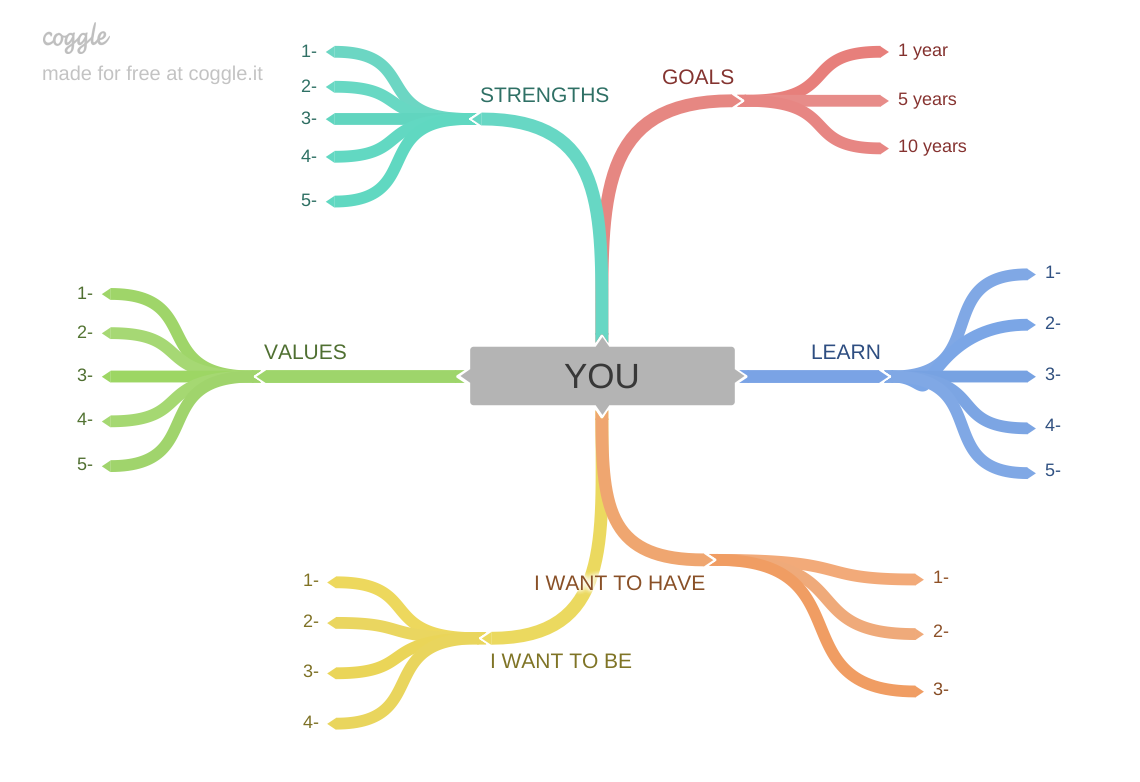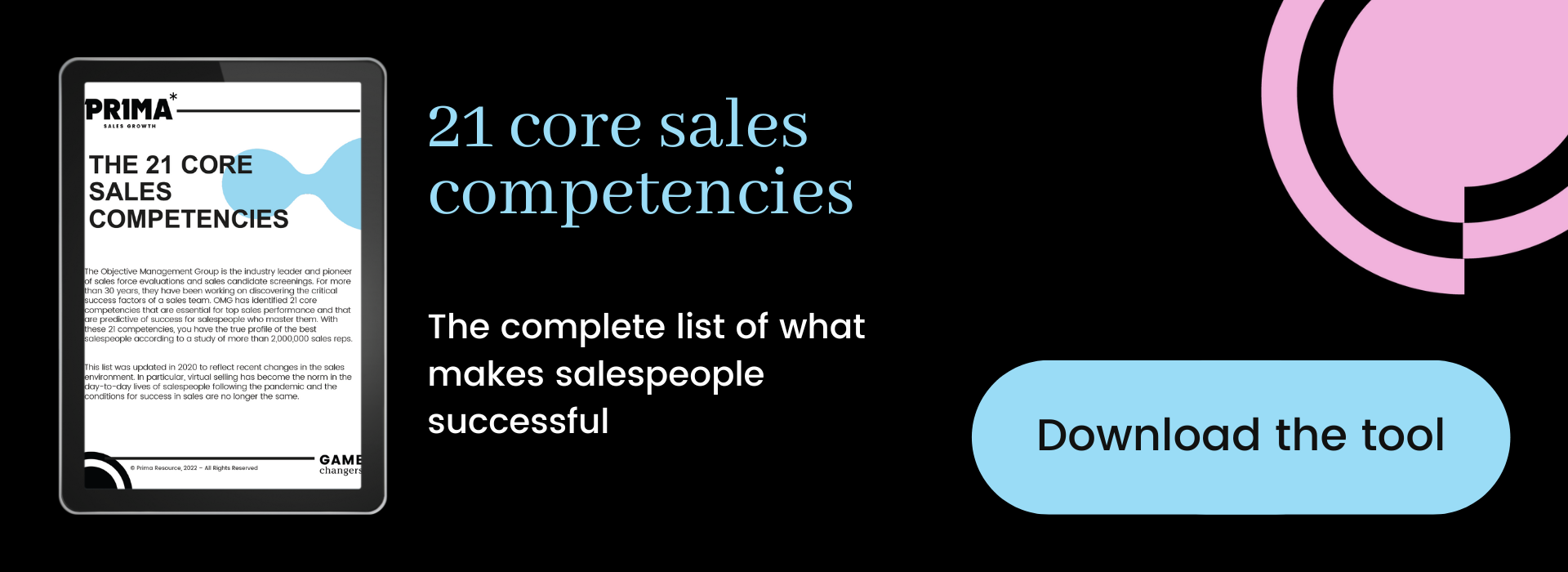 We often talk about how to set good sales targets, when we should do it, how we can achieve them, etc. While this is an essential exercise for companies and sales teams who want to be successful, what about the personal goals of each individual within that larger whole?
We often talk about how to set good sales targets, when we should do it, how we can achieve them, etc. While this is an essential exercise for companies and sales teams who want to be successful, what about the personal goals of each individual within that larger whole?
In my opinion, we need to set personal goals beforehand in order to give meaning to our work and to be more motivated and perform better on a daily basis. In sales, this is especially true, because experience of the job is mainly acquired in the field. You must therefore give your 100% every day to continue to evolve. You may also have a large portion of variable salary, so your remuneration depends on your ability to give the best of yourself. Your motivation is therefore essential to your success.
By giving a reason for the money you earn or the activities you accomplish, I believe that the efforts you put in will seem a little easier to you in your work and in your personal life.
Learn the Mind Mapping technique
It is important to take the time to do some introspection and to put your answers on a tangible document. Why is that? Because every morning you will have the opportunity to remind yourself of your objectives and to hold yourself accountable for the actions you need to take to achieve them.
You are free to organize your Map as you wish, but I’m sharing with you the template I used for its structure and simplicity:

Mind Mapping is in fact a visual representation of your ideas that is both creative and organized. Although you can make this type of mind map for other purposes, here the central subject (or center of gravity) is you.
Below is a brief description of the main topics:
1- Your values
You may think this part is the easiest. Everyone knows what values are, and everyone has them. Yet you really need to do the exercise of selecting only 3 to 5 values that are most important to you.
A value represents what you are not willing to compromise on. If, for example, you were offered a job with a great salary, but one of your values was not respected in that agreement, you would not accept the offer. Your values then serve as a starting point in your decisions.
2- Your strengths
You’ve probably already done this introspection for interviews, now it’s time to do it on paper. Your strengths don’t need to be very precise or tangible. I, for example, consider myself to be creative and I consider this strength to be one of my top 5. Your strengths don’t necessarily have to be related to your work either.
For this step, I notice that we are often biased by the notion of success. It is not necessarily because you have been successful in a particular field that you are good at it. Conversely, you could be very good in another area, but never be successful. Success can be generated by external factors beyond our control. Remember that the notion of success is also subjective to each person.
3- Your goals
In theory, there is no limit to the number of goals you may want to achieve. However, one of the main reasons people don’t achieve their goals is that they have too many, don’t know where to start, and end up thinking it’s unrealistic.
Limit yourself to a few goals, but do it over several periods of time. You can see on the template that the goals range from short term to long term. This allows you to establish a certain chronology and more structure.
Ideally, your objectives should also be formulated in a SMART way.

https://www.questionpro.com/blog/smart-objectives-and-goals/
4- Required learnings
Are there things you need to learn in order to achieve the goals you have just listed? For example, if your goal is to become a real estate broker within 5 years, what courses or training do you need to take?
This time, list your answers in priority order. The first item on your list should be the first one you will check off as accomplished.
When it comes to selling, you could need to become more consultative in order to be more successful, so choose the training that will help you develop this competency.
5- What you want to have
The last two sections are related to what your goals will bring you. They are not just long-term goals, they are life goals! This is the more materialistic part.
Maybe you’ve always dreamed of buying a house in a particular city, or there’s a brand of car you’ve been coveting for a long time. Whatever it is, show it on your Map.
6- What you want to be
Again, what do you want to get out of your ultimate goals?
You may want to become a better leader, be able to inspire others, etc.
Using your Map
Your Map is useless if you don’t refer to it. When you are faced with a big decision, such as the example of the big salary, this is where you need to challenge yourself.
If I make this decision, are my core values respected? Will my strengths be utilized? Will it help me achieve my goals? Will I learn something useful? Will it contribute to what I want to have and what I want to be in my life? All of these questions should be answered in relation to your Map before you make your choice.
You make better decisions when they are aligned with your goals for the present and the future. You are not only more motivated, but you perform better and are less stressed at the same time.
For your work
You can also use your Map as a motivational tool when performing the less enjoyable tasks of your job.
Let’s not hide it, in sales, it is often the prospecting process that seems to be the most difficult. I don’t always feel like making cold calls during my day. It’s during these moments that I like to visualize my map and remind myself of my goals. My prospecting calls are an essential step in the success of my work, and the success of my work brings me closer to my goals. I also look at my strengths: I’m creative, so how can I make my cold calls in a way that harnesses that strength and makes the task easier and more enjoyable?
To sum up, what I want to convey to you is that establishing our goals visually makes it easier for us to reflect on the key elements that are essential to our success.
In my work as a sales rep, I realized that by applying this method, I not only work hard, but above all, I work better!






